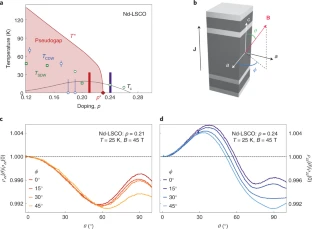Phys.org March 10, 2022
In high-temperature superconductors, at a certain “critical point,” electrons seem to vanish from the Fermi surface map. To understand this phenomenon and engineer that property into some other material that is easier to adopt in technologies, an international team of researchers (USA – Cornell University, UT Austin, National High Magnetic Field Laboratory, Binghamton University, Canada, France, UK) discovered that magnetism is key to understanding the behavior of electrons in “high-temperature” superconductors. They measured the Fermi surface of a copper-oxide high temperature superconductor as a function of electron concentration, right around the critical point and found that the Fermi surface changes completely as researchers dial past the critical point. Among the different simulation models, they built based on several theories the one associated with magnetism explained the phenomenon. The critical point also marks the electron concentration where the superconductivity happens at the highest temperatures. The work offers insight into why particular superconductors function at much higher temperatures, greater than 100 degrees above absolute zero… read more. TECHNICAL ARTICLE

ADMR above and below the pseudo gap critical doping p* in Nd-LSCO… Credit: Nature Physics (2022)